With the continual increase in workload and the constant quest for efficiency, automation tools enable companies of all sizes to streamline their processes, reduce repetitive tasks and optimize productivity. Among the many solutions available on the market, Zapier and Make.com stand out as two of the most popular and powerful automation platforms in 2024.
Zapier, renowned for its ease of use and vast network of integrations, and Make.com, famous for itsflexibility and advanced customization capabilities, both offer unique solutions for automating everyday tasks.
This article aims to provide a detailed comparison between Zapier and Make.com, highlighting their strengths, weaknesses, and unique features.
Solid platforms
Zapier: the must-have automation platform
Since its launch in 2011, Zapier’s mission has been to simplify automation for professionals and businesses.
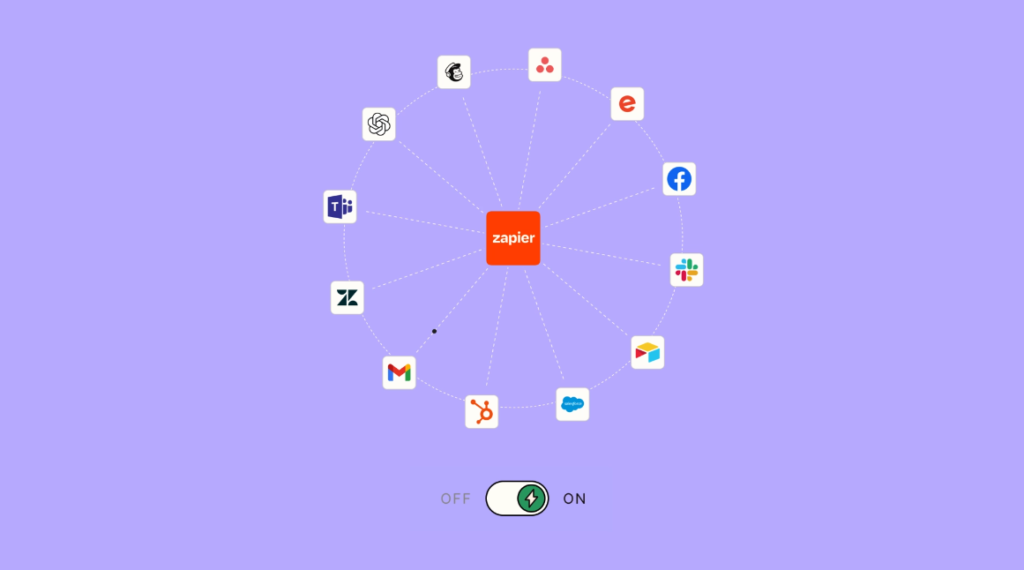
The platform makes it easy to connect web applications used on a daily basis to automate repetitive, time-consuming tasks. Over the years, Zapier has grown exponentially, both in terms of popularity and integration offerings.
In 2024, Zapier boasts a rich library ofthousands of integrations with a variety of applications, from project management and communications tools to marketing and software development platforms.
The evolution of Zapier is marked by the regular introduction of advanced features, such as multi-step Zaps.
Make.com: the flexible, visual automation platform
Formerly known as Integromat, Make.com began its journey in 2012, quickly making a name for itself with its graphical automation visualization.
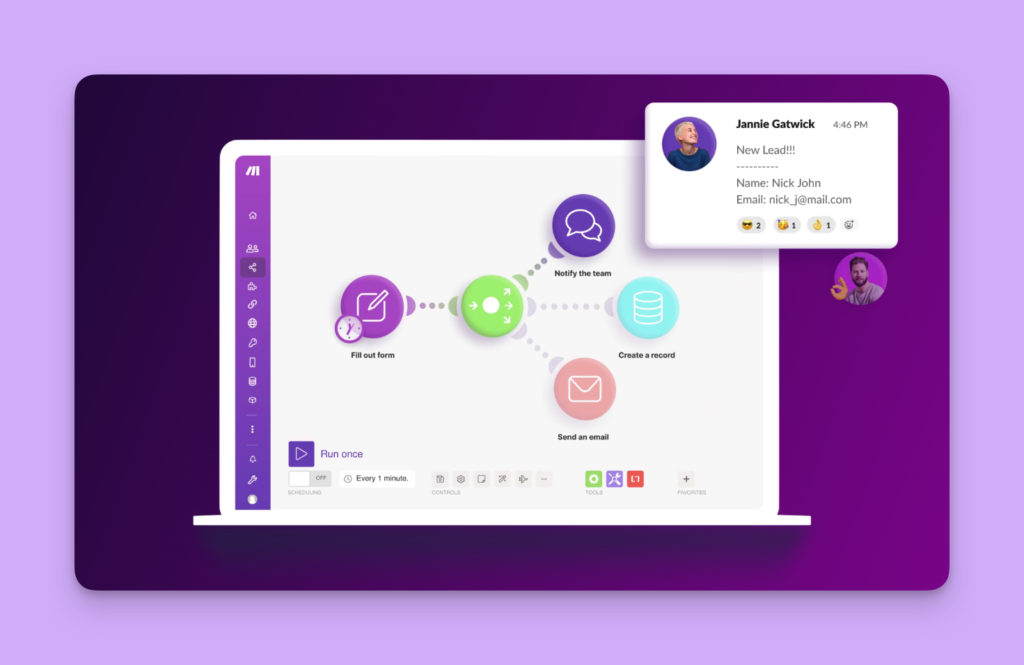
This unique approach to creating automated workflows has made automation more accessible to non-developers, while allowing for increased customization and complexity in creating automation.
The rebranding of Integromat as Make.com marked a decisive turning point for the platform. With a reinforced focus on flexibility and the expansion of its integration capabilities, Make.com facilitates automation on an even greater scale.
In 2024, Make.com stands out for its no-code/low-code approach, democratizing automation by putting powerful tools in the hands of designers and businesses of all sizes.
Zapier, intuitive UX and tidy UI
Zapier’s UI is designed to enable users to create automated workflows by connecting different applications and platforms seamlessly, without requiring in-depth technical knowledge.
Ease of use and accessibility
Zapier was praised for its intuitive interface, enabling automation workflows to be set up without coding skills.
Creating integrations to improve workflow efficiency takes just a few minutes, making Zapier equally suitable for individuals, large teams and any size of organization.
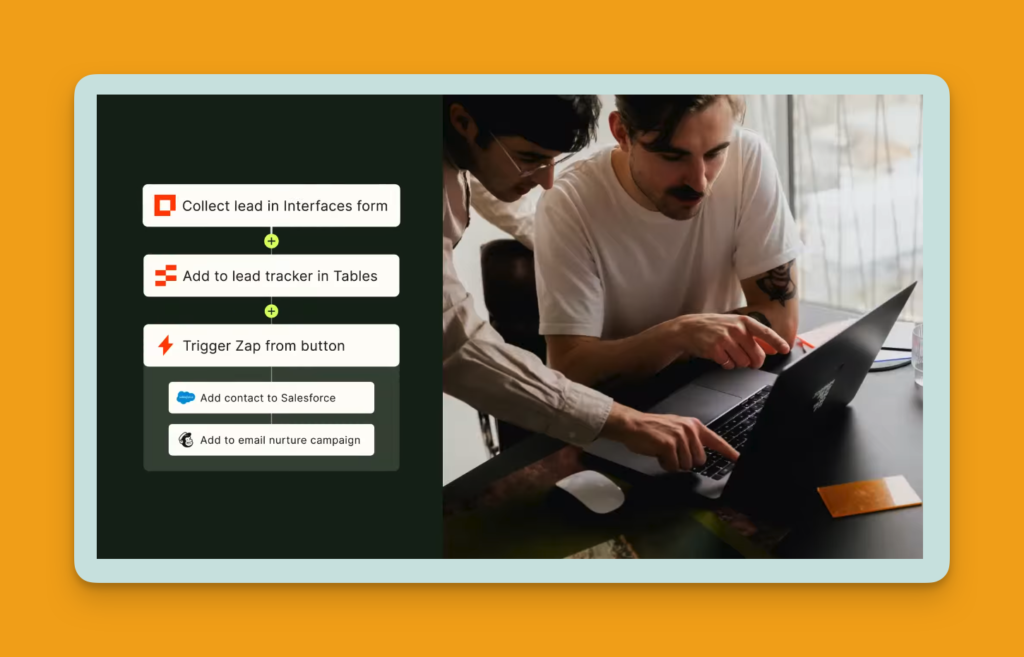
This ease of use makes Zapier particularly valuable for sectors such as online marketing agencies and freelancers, enabling them to integrate and automate their daily workflows without technical knowledge.
Organization and management
Zapier’s interface is well organized, making it easy to manage multiple Zaps (automations) containing multiple steps. Users can sort and organize their Zaps using folders, subfolders, and a search function, making it easy to find specific Zaps.
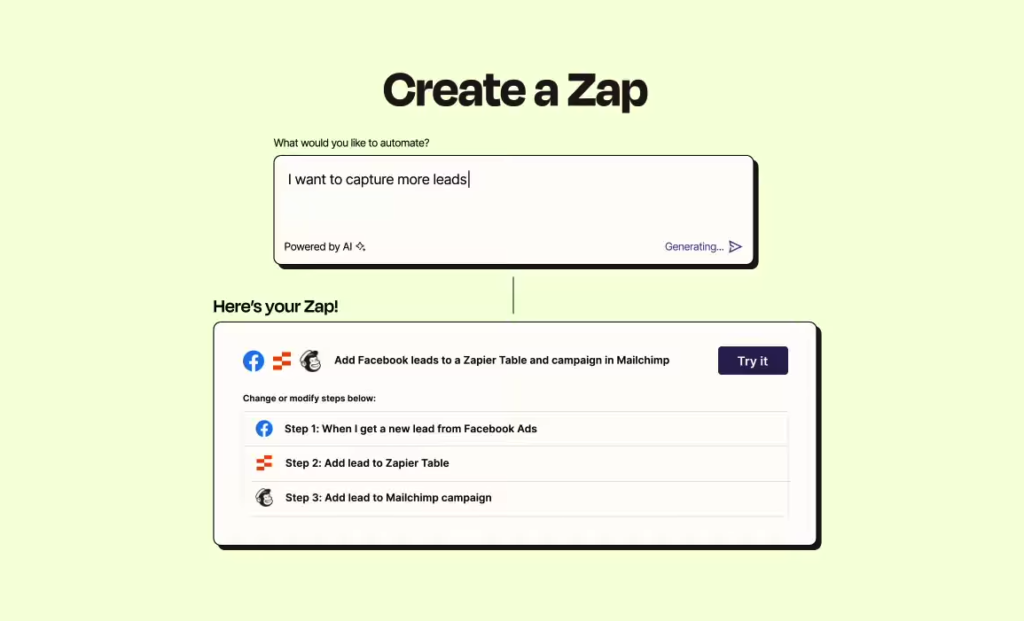
Once a Zap has been located, the user can perform several tasks from the main interface, including activating or deactivating a Zap, viewing applications connected to a particular Zap, viewing a Zap’s usage history, and much more.
Central Zap, the AI assistant for automation
Zapier Central is a new experimental feature of Zapier that allows users to create and interact with AI bots to automate tasks in different applications.
This feature combines conversational artificial intelligence with Zapier’s multi-application automation capabilities
The goal of Zapier Central is to create AI bots that can work autonomously, following instructions they have been taught, even in the absence of the user
The main features of Zapier Central
- Create AI bots and teach them specific behaviors without coding, simply by conversing with them.
- Connect bots to over 7,000 Zapier-integrated applications so they can work in these various tools (Gmail, Trello, Salesforce, etc.
- Allowing bots to access live data from spreadsheets, Google documents or Notion to analyze and use this information.
- Interact with bots via a chat interface to give them instructions, ask questions about data, or request them to perform actions such as sending an email, updating a spreadsheet, etc.
- Create several specialized bots for different tasks and workflows.
Make.com, a UX that emphasizes visualization
Make.com’s interface and user experience are characterized by a visual approach that makes it easy to visualize and manage automations. Its mind map interface enables a more intuitive understanding of workflows.
Visual interfaces
Make uses avisual interface, similar to a mind map, which stands out for itsmodern approach allowing clear visualization of automation scenarios.
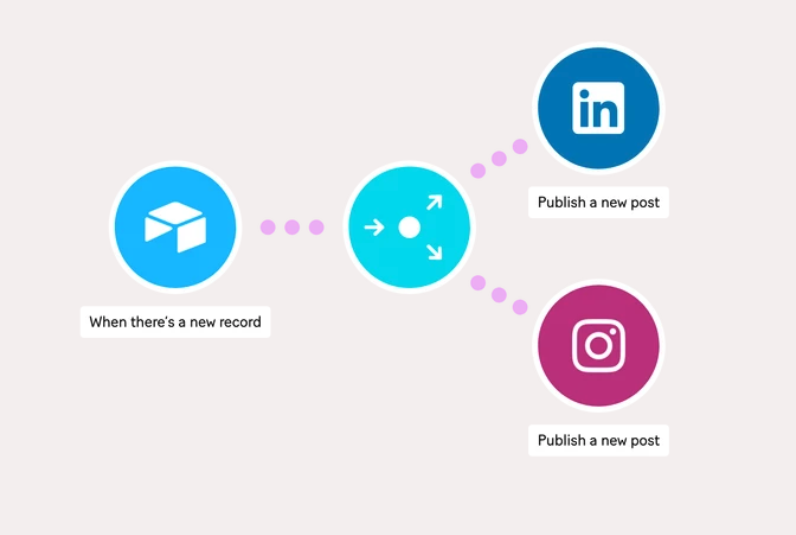
This method of representing automation modules, or steps, as bubbles offers an intuitive understanding of the workflow, promoting problem detection and correction.
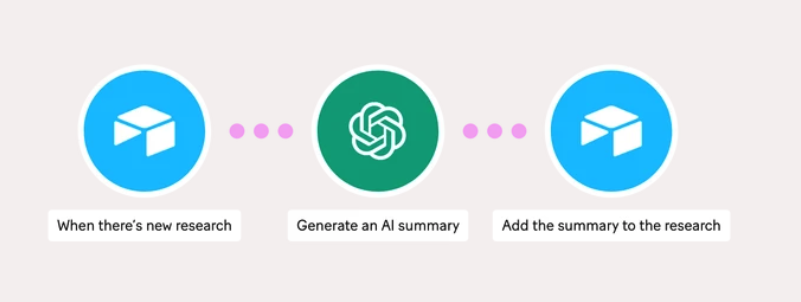
Make also boasts advanced features such as a data store for temporary data storage, enriching automation possibilities.
Tarification and Plans
Zapier offers a variety of plans, including a limited free option and several paid tiers to suit the needs of users from small teams to large enterprises.
Make.com stands out for its more affordable pricing, offering competitive pricing that can be particularly attractive for users or teams withadvanced automation needs but limited budgets.
Reliability and Support
Reliability is an essential criterion when choosing an automation platform, as it directly affects the continuity of business processes and task management.
Both Zapier and Make.com enjoy a solid reputation for the reliability of their services, ensuring that automations work as expected without major interruptions.
Customer support is another important aspect. Zapier offers various support, including access to experts for setting up and repairing Zaps. Make.com, also provides help resources and customer support to resolve any problems encountered by its users.
Make.com vs Zapier comparison chart
| Zapier | Make.com | |
|---|---|---|
| User interface | User-friendly, intuitive interface, easy to navigate for beginners. | Visually rich and flexible interface, offering further customization for advanced users. |
| Easy creation and management of automations | Guided creation process with easy-to-configure “Zaps”. | “Scenarios” system enabling more detailed and complex automation design. |
| Features | Large range of triggers and actions with solid core functionality for automation. | Advanced features such as logical operations and iterations, targeting technical users. |
| Integrations | More than 7,000 embeddable applications. | More than 1,000 applications, with a unique ability to connect to services without formal integration via HTTP/SOAP and JSON/XML. |
| Pricing and plans | Limited free plans available. Paid plans based on number of tasks/month, ranging from $19.99 to $599 per month for enterprises. | Free plans with limitations. Paid plans based on operations, from $9 to $29 per month for standards, with customized options for enterprises. |
| User requirements | Ideal for users requiring many simple integrations. | More suitable for users requiring complex, customized automation processes. |
| Reliability | Very reliable, with regular maintenance and updates. | Solid reputation for reliability, with advanced scenario monitoring options. |
| Customer support | Support via email and help center, with paid plans offering priority support. | Support via email, forums, and full documentation. Priority support is included in some paid plans. |
| Cases in use | Ideal for desktop task automation and integration between popular SaaS applications. | Perfect for companies needing complex, customized automations, including deep web integrations. |
Usage Cases and Automation Ideas
Practical examples for each platform could include automating lead nurturing processes, synchronizing tasks between project management tools and calendars, or optimizing customer support workflows.
Some ideas for automation:
Marketing
- Automated e-mail campaigns: Automatically trigger personalized e-mail sequences based on users’ actions on your website, such as signing up for a newsletter or downloading an ebook.
- Lead management: automatically transfer lead information collected from online forms to your CRM, assign leads to sales reps and launch follow-up sequences.
Sales
- Lead tracking: Create automations to notify sales teams when leads perform key actions, such as visiting a pricing page or watching a product demo.
- Update customer records: Automate the updating of customer information in your CRM when new data is collected across different platforms.
Customer support
- Support ticket management: Integrate your customer support inbox with your ticket management tool to automatically classify, assign and prioritize tickets based on their content.
- FAQs and automated answers: Set up a system of automated answers for frequently asked questions, allowing customer support to concentrate on more complex problems.
IT operations
- Data backups: Schedule regular backups of your important data to various storage media and cloud services.
- Security alerts: Set up automatic notifications when suspicious activity or vulnerabilities are detected in your IT systems.
Project Management
- Project status updates: Send automatic project progress updates to stakeholders at regular intervals.
- Integration of new employees: Automate the onboarding process by sending resources, checklists and scheduling introductory meetings with key teams.
Human resources
- Leave management: Automate the process of requesting and approving leave, as well as updating team calendars.
- Recruitment : Automate the publication of job offers on multiple platforms and the collection of applications in a single place.
Advantages and disadvantages
With an intuitive user interface and an extensive library of nearly 7,000 integrated applications, Zapier makes it easy to create complex workflows without requiring coding skills.
The platform also stands out for its integration of forward-thinking features, such as the use of artificial intelligence.
His large user community and well-established customer support reinforce his appeal. However, Zapier has its limitations, including a potentially higher cost comparing to Make.com, a restriction to a maximum of five paths or branches in a workflow after the trigger, and the inability to handle historical data prior to the creation of a “Zap”.
On the other hand, Make.com is positioned as a more affordable alternative, especially for team plans, offering advanced data manipulation and advanced business logic.
Make.com presents a set of challenges, including a complex visual interface that may prove confusing to novices and the necessity of coding skills to take full advantage of advanced scenarios. In addition, although its catalog of integrations is less extensive than Zapier’s, at around 1,200 applications, it remains substantial for many professional uses.
AI NEWSLETTER
Stay on top of AI with our Newsletter
Every month, AI news and our latest articles, delivered straight to your inbox.

CHATGPT prompt guide (EDITION 2024)
Download our free PDF guide to crafting effective prompts with ChatGPT.
Designed for beginners, it provides you with the knowledge needed to structure your prompts and boost your productivity
With this ebook, you will:
✔ Master Best Practices
Understand how to structure your queries to get clear and precise answers.
✔ Create Effective Prompts
The rules for formulating your questions to receive the best possible responses.
✔ Boost Your Productivity
Simplify your daily tasks by leveraging ChatGPT’s features.
Similar posts
ChatGPT Canvas : The new interface for writing and coding with ChatGPT
You thought OpenAI was on the wane? 😉 After recent announcements that may have disappointed some people’s expectations, OpenAI continues to push the boundaries of its chat tool, with the …
How Notion became an indispensable tool for my web agency
One platform, a thousand possibilities Notion: a versatile solution In a world where efficiency and versatility are key, Notion stands out as an all-in-one platform. No more juggling multiple tools …
Top 10 free AI training courses in 2024
In 2024, it’s never been easier to learn about artificial intelligence, thanks to accessible and free online training courses offered by the world’s top universities and companies. Discover our selection …


